Every time I pay the gym fee, I always feel that I can successfully build a good figure this time, and I will be beaten again after 3 days.
A new and powerful colleague came to me, so secretly determined to start working hard, I signed up for a certificate exam, and after a week of study, I silently told myself that the exam time was still long.
Opening a WeChat tweet to see how many books a certain celebrity reads a year is really amazing. He has to be like him, so he decisively developed a reading plan for himself, but the fact is that it may even be complete on the first day. Hours cannot be read intently.

▲ Photo by Pixabay from Pexels.
Cultivating habits is an eternal topic. No matter how perfect or reasonable our plans are, reality is hitting our faces again and again.
There are a variety of theories and software on the market that want to help you cultivate new habits. Some software make you happy with cartoon images.Happy punching, such as “Little Habits”; some software lets you understand your situation through powerful data analysis, such as “Habit Up”; some software allows you to persist in punching through mutual supervision, such as “Timing”; some software passes Gamification allows you to develop habits like playing games, such as “Habit Shop”.
I have tried all of these softwares, and none of them helped me to form a habit. The reason is not that these software have too few functions, but that there are too many functions.
21-day rule and 2-minute rule introduction
Cultivating habits is actually very simple, just one word-repetition.
Every night at 2am, we will go to bed reluctantly, and over time, we will get more and more late. Isn’t that just cultivating habits through simple repetitive behavior?

According to researchIt takes 21 days for the brain to build a new neural channel. So, after 21 days of repetition, you will form a habit, and after 90 days of repetition, you will form a stable habit. This is the 21-day rule.
The 2-minute rule is derived from GTD (Get Things Done) theory. If you do n’t need 2 minutes to complete something, do it now.

The biggest problem in using the above software is that too many functions make me immersed in the software accidentally. Over time, it is too tiring to punch a card, so I don’t want to punch it. Or the software reminds you that it is time to check in, but it has not been completed, so you ignore it first, and plan to check in later, but you missed today’s check in.
The 21-day rule tells me that it takes at least 21 days to cultivate a new habit. The 2-minute rule tells me that it does n’t take more than 2 minutes to check in, otherwise I will resist.
How to use “22 Days”
ApThe concept of “22 Days” is 21 days to develop + 1 day to repair. My understanding is that staying for another day is to strengthen my faith.
Open the software, we can see that the software is very simple. There is only one countdown, the circle number indicates how many days are left until the end of 22 days, and the text indicates that you want to cultivate habits. Click on any of the habits, and there will be three buttons: “Complete Today”, “Restart”, and “Delete”. Nothing else. From opening the software to completing all the habit of punching today, it took less than 1 minute.
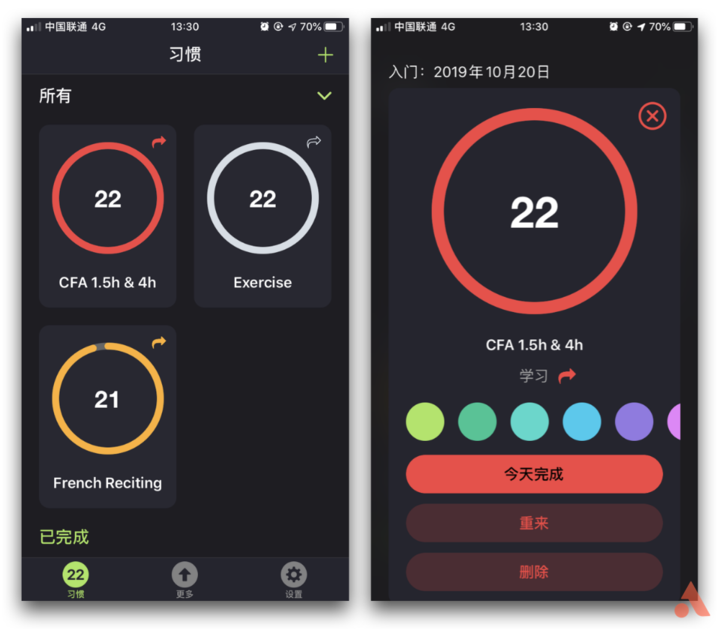
Developers have also recently added a grouping function to store their habits in different categories. But I personally recommend not to cultivate multiple habits at once, the more habits you want to cultivate, the easier it is to give yourself excuses to give up. Therefore, I think the grouping function is only used after a period of time to see how many types of habits I have developed.
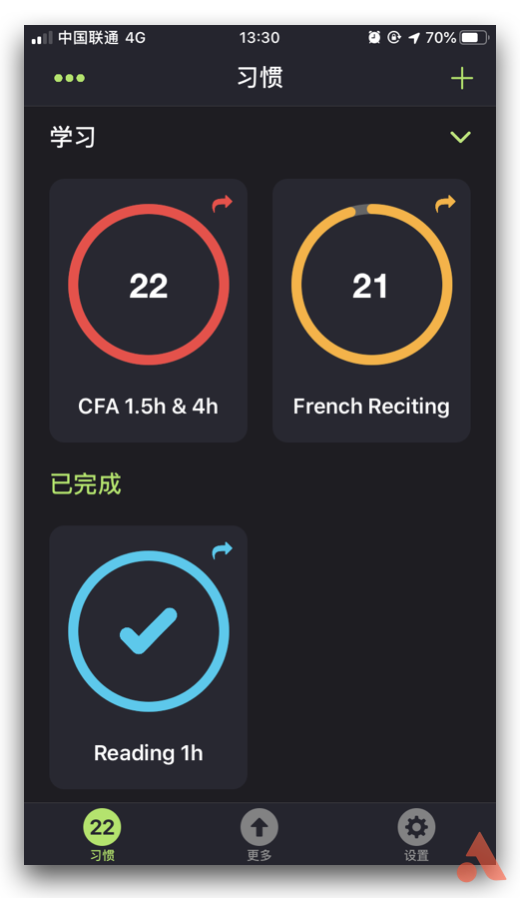
How to avoid forgetting to check in by yourself
During the use of “22 Days”, the biggest problem is not persisting, but forgetting to check in! And if interrupted, 22 Days will immediately reset the habit. To be honest, I forgot several times, and even once there were only a few days left to complete, and the result was reset. Guilt and anger made me more persistent in punching, which is exactly what other software did not bring me.
Later, I found a way to avoid forgetting to check in.
1. Put “22 Days” in the most prominent Dock.
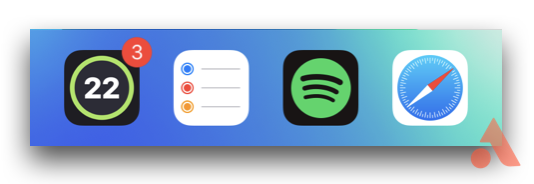
2. Automate punch-in with Quick Command. Every time automation is turned on, you must implement the “2-minute rule” and enter the software to check in. The setting of 23 points is to avoid getting used to and not completing.
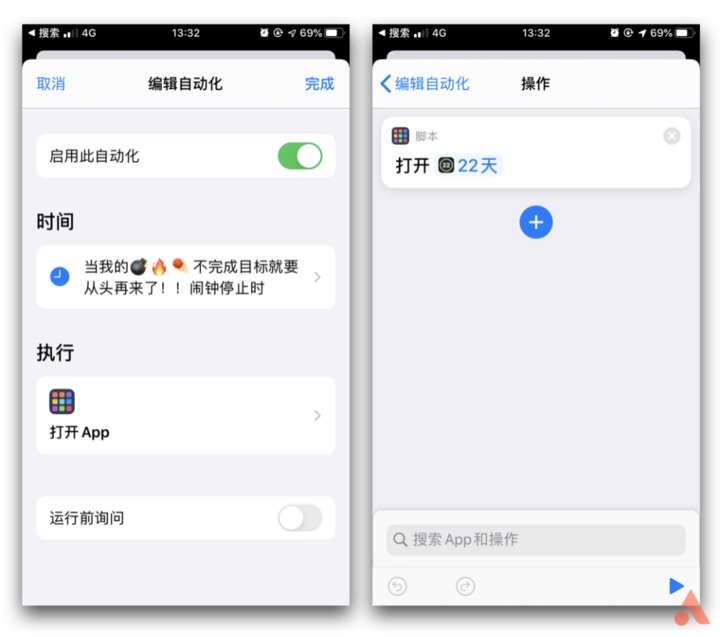
22 days are just beginning
The 21-day rule actually divides habit formation into 3 stages.
- Days 1 to 7: You must remind yourself from time to time to change and ask yourself deliberately.
- Days 8 to 21: Although more conscious, it’s easy to interrupt. So still remind yourself deliberately.
- Days 22 to 90: You no longer need to ask yourself deliberately, and sticking to this stage will make new habits a part of your life, just like brushing your teeth. That’s why someone can keep memorizing words for hundreds of days, and someone can keep signing in for thousands of days.
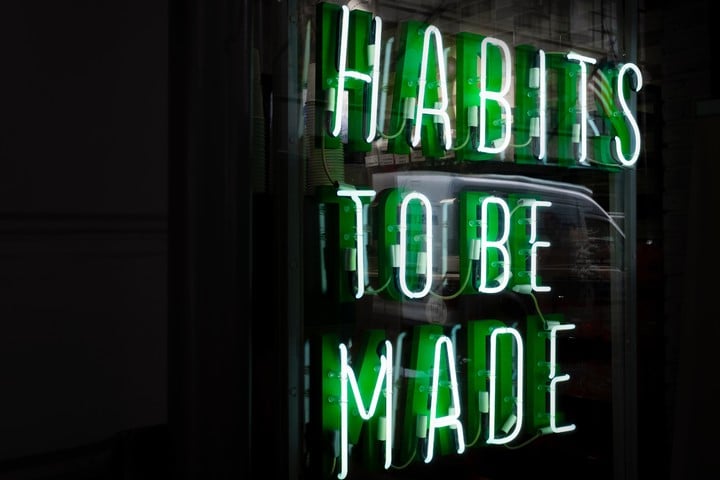
▲ Photo by Drew Beamer on Unsplash.
Click to restartThe completed “French Reciting” started a new round of countdowns without any new changes. But I found a “Getting Started” in the upper left corner. I wonder if it will become “Mastery” after 22 days?
“22 Days” is so simple that it may not satisfy your “vanity” through various data analysis. The quotation mark is that I think it can also be a good “vanity” as long as it helps me to persist. Here is a template for “Coda” “66 Day Challenge Habit Tracker” (hereinafter referred to as “66 days”). The reason is that the Coda free plan is enough to support you to develop a lot of habits, you can also customize the content according to your own needs, and its theoretical basis is also “21 days rule”.
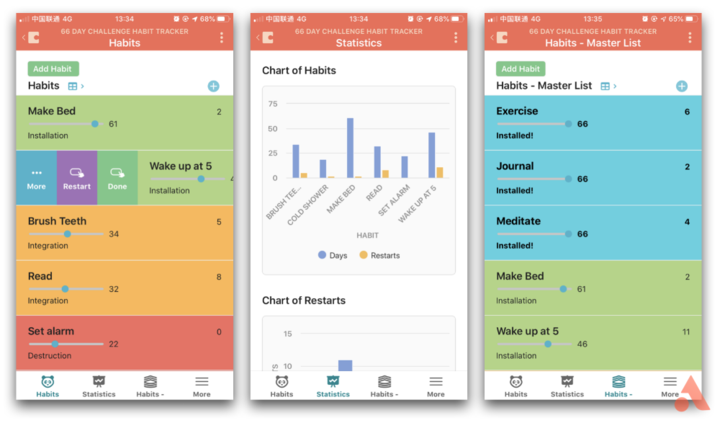
You can check in “Habits” in “66 days”, see how many times you have come back, and see that you are in the stage of habit formation; you can customize data analysis in “Statistics” according to your needs You can read your completed habit in the “Habits – Master List”; of course, you can also continue to customize the content according to your needs, just like the slogan of “Coda”, a document is a software.
Either way, what suits you is the best, and most importantly-start doing it.
* 22 days for iOS 10.0 and watchOS 4.0 or later, 39.1 MB, 6 free downloadsBuy within the yuan. Available for macOS 10.15 or later, 1.1 MB in size, and priced at $ 6.